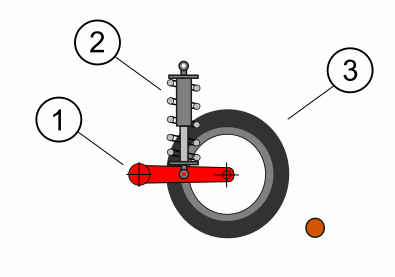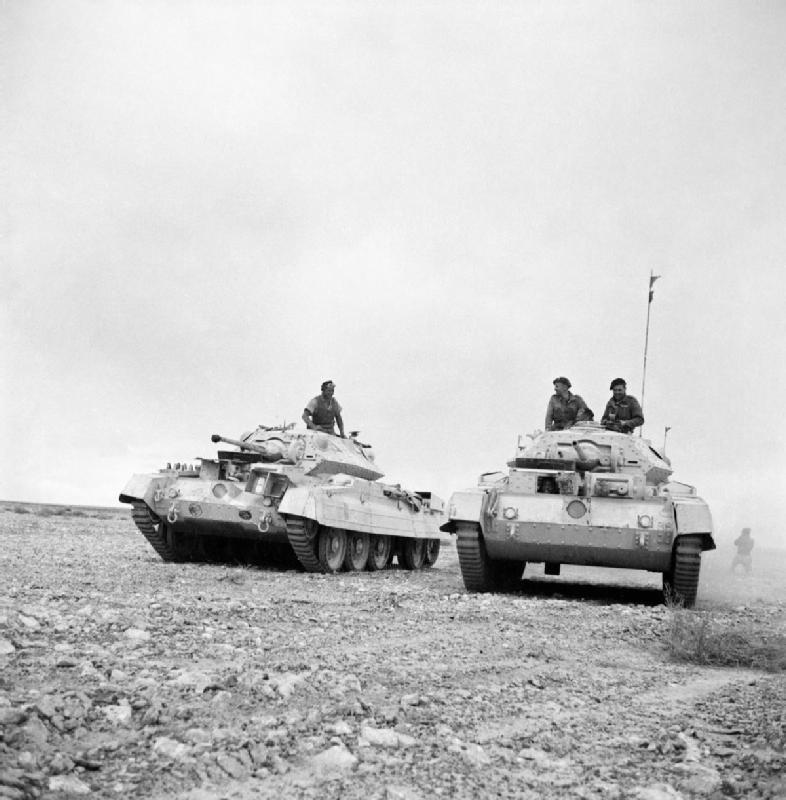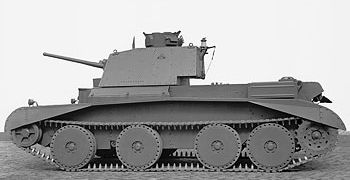|
Christie Suspension
The Christie suspension is a suspension system developed by American engineer J. Walter Christie for his tank designs. It allowed considerably longer movement than conventional leaf spring systems then in common use, which allowed his tanks to have considerably greater cross-country speed. The system was first introduced on his M1928 design, and used on all of his designs until his death in 1944. History Christie advocated the use of lightweight tanks with long range and high speed, designed to penetrate enemy lines and attack their infrastructure and logistics capabilities. A major problem with tanks in World War I was tracked suspension failure. Christie's first tank design of 1919 could be driven on its wheels to get to the starting point and then the tracks fitted before it went into action. The US Tank Corps ordered a single tank from Christie's company based on this design. The tank, known as the M1919, was delivered in early 1921 and tested until Christie prop ... [...More Info...] [...Related Items...] OR: [Wikipedia] [Google] [Baidu] |
BT Tank
The BT tanks (russian: Быстроходный танк/БТ, translit=Bystrokhodnyy tank, lit. "fast moving tank" or "high-speed tank") were a series of Soviet light tanks produced in large numbers between 1932 and 1941. They were lightly armoured, but reasonably well-armed for their time, and had the best mobility of all contemporary tanks. The BT tanks were known by the nickname ''Betka'' from the acronym, or its diminutive ''Betushka''. The successor of the BT tanks was the famous T-34 medium tank, introduced in 1940, which would replace all of the Soviet fast tanks, infantry tanks, and medium tanks in service. Design The BT tanks were "convertible tanks". This was a feature that was designed by J. Walter Christie to reduce wear of the unreliable tank tracks of the 1930s. In about thirty minutes, the crew could remove the tracks and engage a chain drive to the rearmost road wheel on each side, allowing the tank to travel at very high speeds on roads. In wheeled mode, the ... [...More Info...] [...Related Items...] OR: [Wikipedia] [Google] [Baidu] |
Torsion Bar Suspension
A torsion bar suspension, also known as a torsion spring suspension, is any vehicle suspension that uses a torsion bar as its main weight-bearing spring. One end of a long metal bar is attached firmly to the vehicle chassis; the opposite end terminates in a lever, the torsion key, mounted perpendicular to the bar, that is attached to a suspension arm, a spindle, or the axle. Vertical motion of the wheel causes the bar to twist around its axis and is resisted by the bar's torsion resistance. The effective spring rate of the bar is determined by its length, cross section, shape, material, and manufacturing process. Usage Torsion bar suspensions are used on combat vehicles and tanks like the T-72, Leopard 1, Leopard 2, M26 Pershing, M18 Hellcat, M48 Patton, M60 Patton and the M1 Abrams (many tanks from World War II used this suspension), and on modern trucks and SUVs from Ford, Chrysler, GM, Mitsubishi, Mazda, Nissan, Isuzu, LuAZ, and Toyota. Class 8 truck manufacturer Kenwor ... [...More Info...] [...Related Items...] OR: [Wikipedia] [Google] [Baidu] |
Italy
Italy ( it, Italia ), officially the Italian Republic, ) or the Republic of Italy, is a country in Southern Europe. It is located in the middle of the Mediterranean Sea, and its territory largely coincides with the homonymous geographical region. Italy is also considered part of Western Europe, and shares land borders with France, Switzerland, Austria, Slovenia and the enclaved microstates of Vatican City and San Marino. It has a territorial exclave in Switzerland, Campione. Italy covers an area of , with a population of over 60 million. It is the third-most populous member state of the European Union, the sixth-most populous country in Europe, and the tenth-largest country in the continent by land area. Italy's capital and largest city is Rome. Italy was the native place of many civilizations such as the Italic peoples and the Etruscans, while due to its central geographic location in Southern Europe and the Mediterranean, the country has also historicall ... [...More Info...] [...Related Items...] OR: [Wikipedia] [Google] [Baidu] |
Poland
Poland, officially the Republic of Poland, is a country in Central Europe. It is divided into 16 administrative provinces called voivodeships, covering an area of . Poland has a population of over 38 million and is the fifth-most populous member state of the European Union. Warsaw is the nation's capital and largest metropolis. Other major cities include Kraków, Wrocław, Łódź, Poznań, Gdańsk, and Szczecin. Poland has a temperate transitional climate and its territory traverses the Central European Plain, extending from Baltic Sea in the north to Sudeten and Carpathian Mountains in the south. The longest Polish river is the Vistula, and Poland's highest point is Mount Rysy, situated in the Tatra mountain range of the Carpathians. The country is bordered by Lithuania and Russia to the northeast, Belarus and Ukraine to the east, Slovakia and the Czech Republic to the south, and Germany to the west. It also shares maritime boundaries with Denmark a ... [...More Info...] [...Related Items...] OR: [Wikipedia] [Google] [Baidu] |
Comet Tank
The Comet tank or Tank, Cruiser, Comet I (A34) was a British cruiser tank that first saw use near the end of the Second World War, during the Western Allied invasion of Germany. The Comet was developed from the earlier Cromwell tank and mounted the new 17 pdr High Velocity (HV) (3 inch; 76.2 mm – sometimes referred to as "77 mm") gun, in a lower profile, partly-cast turret. This gun was effective against late-war German tanks, including the Panther at medium range, and the Tiger. The Comet rendered the Cruiser Mk VIII Challenger obsolete, and led to the development of the Centurion tank. When firing APDS rounds, the 77 mm HV was superior in armour penetration capability to the 75 mm KwK 42 gun of the equivalent Axis tank, the Panther. The Comet entered active service in January 1945 and remained in British service until 1958. In some cases, Comets sold to other countries continued to operate into the 1980s. Design and development Backgr ... [...More Info...] [...Related Items...] OR: [Wikipedia] [Google] [Baidu] |
Cromwell Tank
The Cromwell tank, officially Tank, Cruiser, Mk VIII, Cromwell (A27M), was one of the series of cruiser tanks fielded by Britain in the Second World War. Named after the English Civil War-era military leader Oliver Cromwell, the Cromwell was the first tank put into service by the British to combine high speed from a powerful, reliable engine (the Rolls-Royce Meteor) and reasonable armour. The intended dual-purpose high velocity gun could not be fitted in the turret, so a medium velocity dual purpose gun was fitted instead. Further development of the Cromwell combined with a high velocity gun led to the Comet tank. The name "Cromwell" was initially applied to three vehicles during development. Early Cromwell development led to the creation of the A24 Cavalier. Later Cromwell development led to the creation of the competing Tank, Cruiser, Mk VIII, Centaur (A27L) design. The Centaur tank was closely related to the Cromwell, both vehicles being externally similar. The Cromwell a ... [...More Info...] [...Related Items...] OR: [Wikipedia] [Google] [Baidu] |
Crusader Tank
Crusader, in full "Tank, Cruiser Mk VI, Crusader", also known by its General Staff number A.15, was one of the primary British cruiser tanks during the early part of the Second World War. Over 5,000 tanks were manufactured and they made important contributions to the British victories during the North African campaign. The Crusader tank would not see active service beyond Africa, but the chassis of the tank was modified to create anti-aircraft, fire support, observation, communication, bulldozer and recovery vehicle variants. The first Crusader Mark I tanks entered service in 1941, and, though manoeuvrable, it was relatively lightly armoured and under-armed. The following Crusader Mark II had a maximum armour of . The main armament for the Crusader Mark I and II's was a 40 mm Ordnance QF 2-pounder gun; the following Crusader Mark III was fitted with a 57 mm Ordnance QF 6-pounder gun at the expense of one member of the crew in the turret. This variant was more than ... [...More Info...] [...Related Items...] OR: [Wikipedia] [Google] [Baidu] |
Covenanter Tank
The Cruiser tank Mk V or A13 Mk III Covenanter was a British cruiser tank of the Second World War. The Covenanter was the first cruiser tank design to be given a name. Designed by the London, Midland and Scottish Railway as a better-armoured replacement for the Cruiser Mark IV, it was ordered into production in 1939 before pilot models were built. Problems with the design became apparent only after production was under way. The tank equipped various British armoured divisions for home defence and training. It never left the UK as poor engine cooling caused the Mk I to Mk III to be declared unfit for overseas service especially in hot climates. This was rectified in the Mk IV after many corrective actions were undertaken but, by February 1944, it was declared obsolete. More than 1,700 of the type were built. It was named after the Covenanters, a Scottish religious faction at the time of the Wars of the Three Kingdoms. Development In 1938, the War Office had issued a requiremen ... [...More Info...] [...Related Items...] OR: [Wikipedia] [Google] [Baidu] |
Cruiser Mk IV
} The Cruiser Tank Mk IV ( A13 Mk II) was a British cruiser tank of the Second World War. It followed directly on from the Tank, Cruiser, Mk III (A13 Mk I). The first Mk IVs were Mk IIIs with extra armour fitted to the turret. Later Mk IVAs were built with the complete extra armour. The tank was used in France in 1940 and in the early part of the war in North Africa, before being withdrawn from service. A fast vehicle compared to other British tanks of the early part of the war, it was probably the best tank Britain had in 1940. In total, 955 of these tanks were built. Design and development Britain became interested in fast tanks after observing the Soviet BT tanks during the 1936 Red Army manoeuvres. The BT was based on the revolutionary designs of American J. Walter Christie and a team from Morris Motors was sent to the United States to purchase a Christie tank and the rights to build more. The tank was given the General Staff designation "A13E1" and was delivered in late 1 ... [...More Info...] [...Related Items...] OR: [Wikipedia] [Google] [Baidu] |
Cruiser Mk III
The Tank, Cruiser, Mk III, also known by its General Staff specification number A13 Mark I, was a British cruiser tank of the Second World War. It was the first British cruiser tank to use the Christie suspension system, which gave higher speeds and better cross-country performance; previous cruiser tank models had used triple wheeled bogie suspension. Design and development British cruiser tank design began with the Mk I and somewhat heavier Mk II in the mid-1930s. Just as prototypes were arriving in 1936, General Giffard LeQuesne Martel, a pioneer in tank design who had published works on armoured warfare and pioneered the lightly armoured "tankette" to enhance infantry mobility, became Assistant Director of Mechanization at the War Office.Milsom Later that year, Martel witnessed demonstrations of Soviet tank designs, including the BT tank, which had been influenced by American J. Walter Christie's work. Martel urged the adoption of the Christie suspension and Christie's pr ... [...More Info...] [...Related Items...] OR: [Wikipedia] [Google] [Baidu] |
Cruiser Tank
The cruiser tank (sometimes called cavalry tank or fast tank) was a British tank concept of the interwar period for tanks designed as modernised armoured and mechanised cavalry, as distinguished from infantry tanks. Cruiser tanks were developed after medium tank designs of the 1930s failed to satisfy the Royal Armoured Corps. The cruiser tank concept was conceived by Giffard Le Quesne Martel, who preferred many small light tanks to swarm an opponent, instead of a few expensive and unsatisfactory medium tanks. "Light" cruiser tanks (for example the Cruiser Mk I) carried less armour and were correspondingly faster, whilst "heavy" cruiser tanks (such as the Cruiser Mk II) had more armour and were slightly slower. The British cruiser tank series started in 1938 with the A9 and A10 cruiser tanks, followed by the A13, A13 Mark II, the A13 Mark III Covenanter in 1940 and the A15 Crusader which entered service in 1941. The Crusader was superseded by the A27 Cromwell in 1944. The ... [...More Info...] [...Related Items...] OR: [Wikipedia] [Google] [Baidu] |

.jpg)




_front-left_2017_Bovington.jpg)


